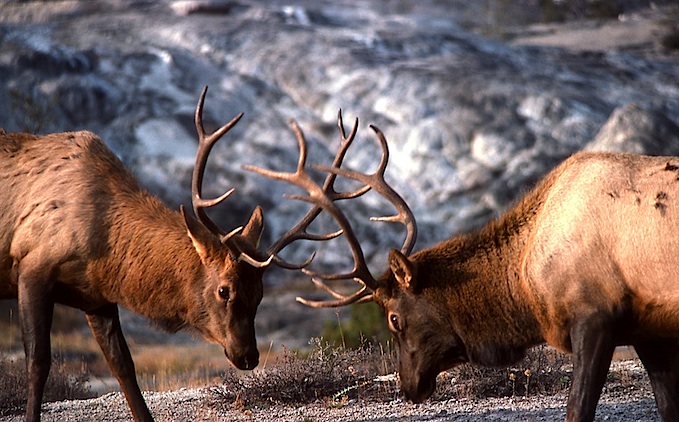
Elk in the mood for love and war can be spotted in many parts of the National Park System in fall. This shot came from Yellowstone National Park. NPS photo.
Wonderment and joy unfold in the national parks come fall when the wild kingdom becomes more visible, literally voicing the call of the wild in parks such as Great Smoky Mountains or Rocky Mountain or winging overhead in any number of parks. Check our list for wildlife watching and you’ll likely find a place not too far from home where you can watch this seasonal affair.
Bird Migrations
Acadia National Park’s granite mountaintops are a great place to watch migrating birds from mid-August into October as “strong northerly winds push thousands of raptors from Maine and Canada south along the eastern coastline as they migrate to warmer areas for the winter,” notes the park staff. This year marks the 19th season of Acadia’s Hawk Watch program. Park rangers and volunteers will be atop Cadillac Mountain on Mount Desert Island daily to help you identify the birds winging by. Migrating birds also soar south along the ridge tops of the Blue Ridge Parkway.
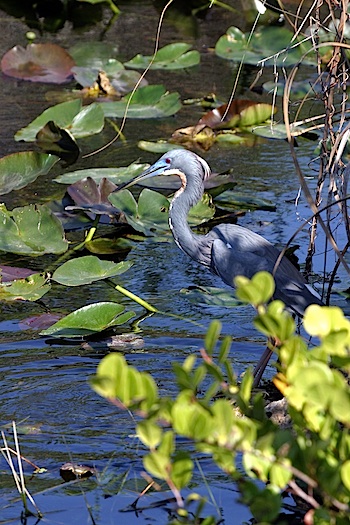
Tri-colored herons are among the waterfowl and wading birds visible in fall at Everglades National Park. NPS photo.
Raptors that can be seen usually include red-tailed, Cooper’s, and sharpshinned hawks. Birds of prey make Dry Tortugas National Park popular with hawk watchers in the fall. Park officials say flocks of raptors are common during September and October, though the southbound migration trickles off and ceases by about late November.
Fall heralds the arrival of the dry season at Everglades National Park in Florida, where birding revs up as birds cluster around waterholes. Among the species commonly sighted are Pied-billed Grebes, American White Pelicans, Double-crested Cormorants, Great and Snowy Egrets, and Tri-colored Herons.
Golden eagles often can be seen soaring on the air currents above the Continental Divide in Glacier National Park during the fall on their southward journeys. Rangers suggest you hike to the Mount Brown Lookout on the west side of the park in mid-October with binoculars in hand to watch for these large birds.
Though better known for grounded wildlife sightings, Yellowstone National Park’s Hayden Valley is a reliable producer of raptor sightings as red-tailed hawks, bald eagles, ospreys, American kestrels and more wing by.
Turkeys don’t migrate, but they occasionally can be seen roaming the forests of Shenandoah National Park, which also has a resident population of owls whose hoots you might be lucky enough to hear if you spend time hiking or camping out.
What’s That Sound?
Perhaps the oddest sound to reverberate through national parks come fall is that of bugling elk. Once upon a time you had to head west to Yellowstone or Grand Teton, Rocky Mountain or Olympic, or even Point Reyes National Seashore to hear that piercing love song. But thanks to an elk recovery program started at Great Smoky Mountains National Park in 2001, you can catch bulls summoning their harems in the Cataloochee Valley in the northeastern corner of the park.
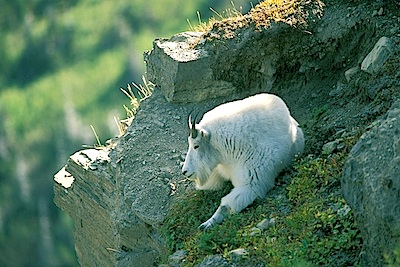
Mountain goats long have been iconic figures at Glacier National Park. NPS photo.
At Yellowstone, bugling hangs in the early morning and evening air in the Hayden and Lamar valleys, near Mammoth Hot Springs, or, if you’re in the backcountry, around meadows.
Rocky Mountain National Park’s Horseshoe Park just inside the Fall River Entrance practically guarantees you an evening of chorusing bulls throughout September and into October, and other good areas include Moraine Park as well as Harbison Meadows and throughout the Kawuneeche Valley on the west side of the park.
Point Reyes National Seashore in California has about 400 Tule elk, and through September you often can hear them bugling near the Tomales Point Trail and at Windy Gap. Up the coast in Washington state Olympic National Park harbors the largest herds of Roosevelt elk in the Pacific Northwest.
September is a good month to listen for bulls bugling in the park’s rain forests. Even the Buffalo National River in Arkansas has bison, and can be a good spot to listen for fall bugling.
Wolves, Bears, Bison, And Other Charismatic Megafauna
Glacier National Park seems to have almost every large mammal from elk to black bears and grizzly bears to moose. More frequently seen than the grizzlies, though, are the snow-white mountain goats that thrive on the steepest of slopes along the Continental Divide. These animals with their professorial goatees often can be seen in the meadows on Logan Pass and even on the trails to the Granite Park and Sperry chalets.
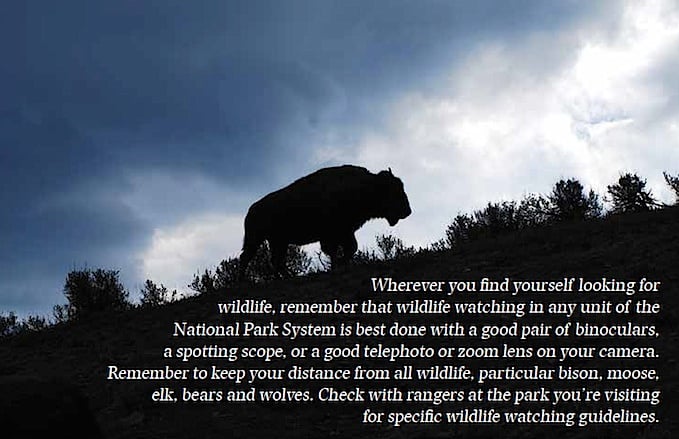
Moose often can be spotted at Grand Teton National Park in Willow Flats, a marshy expanse right behind the Jackson Lake Lodge. Pronghorns, the fastest land animals in North America, might be seen at the southeast end of Jenny Lake or, better yet, along the sagebrush flats lining the Snake River and surrounding Mormon Row. In early September, the Moose-Wilson Road is pretty reliable for black bears, as they come to feast on the tasty hawthorn berries. The bruins are so fixated on gorging themselves that they pretty much ignore the cars on the road. Just remember that they’re wild bears and keep your distance.
At Great Smoky Mountains National Park in Cades Cove, deer can often be seen in the open fields. While bucks with large antlers keep weaker males away and attract a harem much like elk bulls do, deer don’t bugle. Still, their antics during the rut is something to watch...and to keep your distance from. Bears also call the Cades Cove area home, and in the fall they come down into the orchards for some fresh fruit.
Roam the rocky coastline of Olympic National Park and you just might be able to see some of the park’s marine life. The Olympic coast lies along the migratory path of both California and Steller’s sea lions, according to park officials, who add that en route to foraging areas in the Strait of Juan de Fuca California sea lions feed in the coastal waters in the late summer and early fall. Your best bet to spy these creatures are on the islands off the coast of Cape Flattery and Cape Alava.
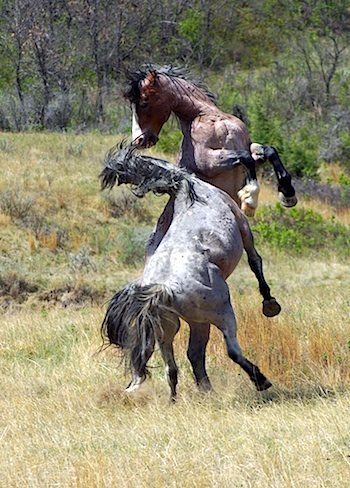
Feral horses can be spotted at Theodore Roosevelt National Park year-round. NPS photo.
At Shenandoah National Park, it’s possible to spy black bears attracted in fall to the old apple orchards established by homesteaders before they left for creation of the park.
The Lamar Valley in Yellowstone is a reliable spot for sighting not only elk and bison but also wolves, bighorn sheep and, if you’re lucky, grizzlies. September into October are good months for going whale watching in the waters off Acadia National Park.
Bison, elk, and feral horses are among the large animals easily spotted in Theodore Roosevelt National Park during the fall months. Travel to Shackleford Banks at Cape Lookout National Seashore in North Carolina and you can spy some of the seashore’s famous Banker horses.

 Support Essential Coverage of Essential Places
Support Essential Coverage of Essential Places






